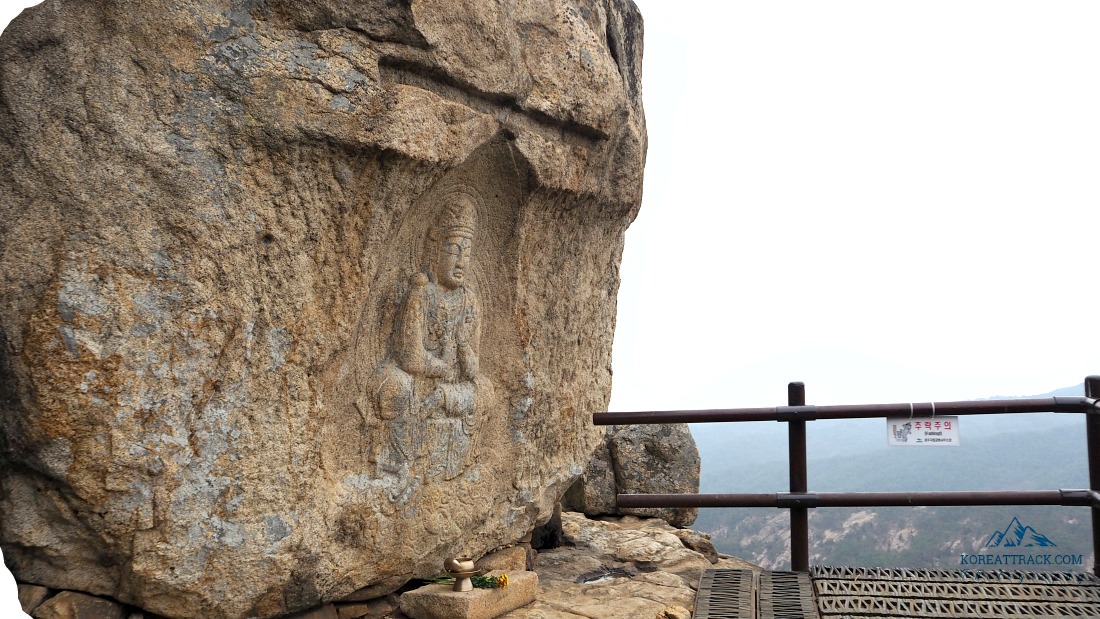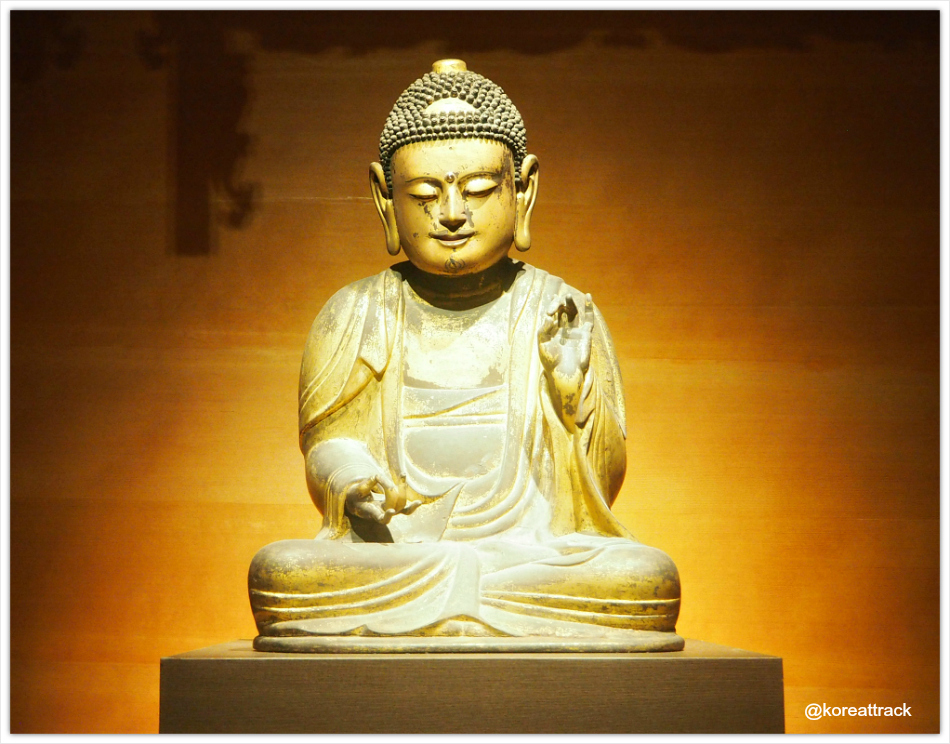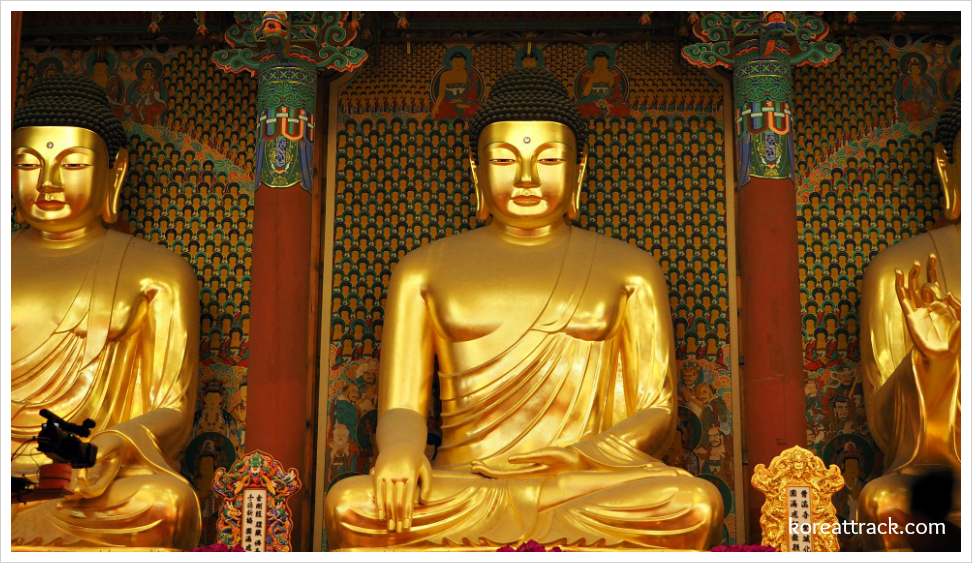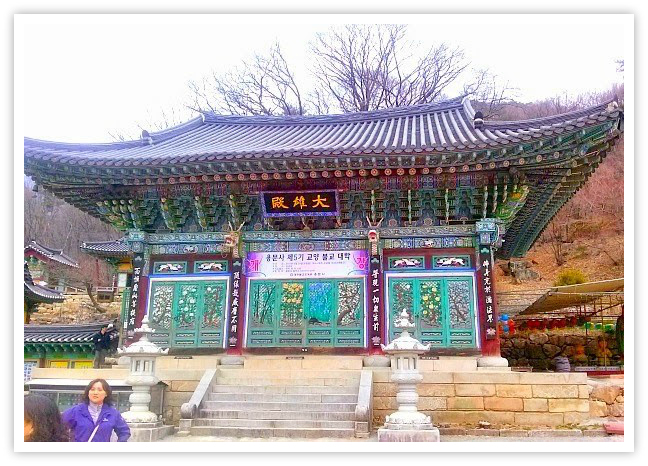Golgulsa Temple In Gyeongju
 A sculpture of Buddha carved on a granite stone. It is about 20 km from Golgulsa Temple in Gyeongju.
A sculpture of Buddha carved on a granite stone. It is about 20 km from Golgulsa Temple in Gyeongju.Golgulsa Temple In Gyeongju
Hey there! How about we discover the captivating Golgulsa Temple (골굴사) in Gyeongju?
This temple area is also called the Stone Buddha Temple. This ancient temple has an intriguing history and great spiritual significance, making it a must-visit destination.
Let's go...
Golgulsa is a hidden gem located 20 kilometers east of Gyeongju, the ancient capital city of the Silla Dynasty in Southeastern Korea.
The temple is nestled in a picturesque narrow valley on the southern slopes of the majestic Mt. Hamwolsan, which stands tall at 584 meters.
Golgulsa is renowned for its stunning views and serene atmosphere, making it a popular destination for tourists seeking peace and tranquility.
Visitors can explore the temple's various halls, pagodas, and meditation rooms, all while taking in the breathtaking natural beauty of the surrounding landscape.
Whether you're a history buff, a nature lover, or simply seeking a break from the hustle and bustle of city life, Golgulsa is a must-visit destination that promises to leave a lasting impression on your soul.
 A spring season in Gyeongju shows off its amazing cherry blossoms
A spring season in Gyeongju shows off its amazing cherry blossomsHistorical Origins
Golgulsa is a historic grotto temple located in Gyeongju, South Korea. It was established around the 6th century by the monk Gwangyu, who envisioned the temple as a place for meditation and worship.
The temple was inspired by similar grotto temples in India and is considered the oldest such temple in Korea.
Historical accounts suggest that Gogulsa was initially constructed by building a wooden antechapel in front of several stone grottoes, which were then covered with tiles. Unfortunately, the temple collapsed during the mid to late Joseon era.
However, about 70 years ago, the Bak clan of Gyeongju took up the task of reconstruction and began restoring the temple to its former glory. The restoration process was long and arduous and took many years to complete.
Finally, in the 1990s, Venerable Seol Jeogun, the head of Girimsa temple, purchased the temple and has since maintained and preserved it as a historic site.
Today, Golgulsa is a popular tourist attraction and a place of pilgrimage for Buddhists from all over the world.
Unique Features and Structures
Nestled in the limestone cliff lies a breathtaking Seated Rock-Carved Buddha (Treasure No. 581) that dates back to the 9th century.
The serene statue, with its eyes fixed on the Sea of Japan, exudes an aura of tranquility that is hard to miss.
The intricate nimbus encircles the Buddha's head and is adorned with stunning lotuses and flames that seem to dance in the light.
The Buddha's gentle smile is a testament to the calmness that comes from within, and it's hard not to feel drawn to its captivating presence.
Grotto Dharma Halls
Within the main Buddha's premises are five additional grotto halls you can explore and admire.
These halls are named Avalokitesvara Grotto, Ksitigarbha Grotto, Medicine Buddha Grotto, Arhat Grotto, and Guardian Deities Hall.
Each hall is uniquely designed and adorned with intricate details that reflect the rich cultural and artistic heritage of the region. You can witness the beauty and grandeur of these grotto halls by visiting the central Buddha and exploring its surroundings.
Gameunsa Temple Ruins
The ruins, located around 10 kilometers (6 miles) from Golgulsa, are home to two awe-inspiring Three-Story Stone Pagodas.
These pagodas designated National Treasure No. 112, are considered the epitome of Korean stone pagodas. The pagodas are 13.4 meters (44 feet) tall and are perfectly symmetrical.
The intricate details and carvings on the pagodas are a testament to the skilled craftsmanship of the ancient Korean artisans.
Visitors can marvel at the pagodas' grandeur, which have survived for centuries and stand tall as a symbol of Korea's rich cultural heritage.
Underwater Tomb of King Munmu
A small island emerges from the deep blue sea to the southeast of the magnificent rock-carved Buddha.
This rocky island is known for being the final resting place of King Munmu, who was buried in a remarkable underwater tomb.
This island holds significant historical importance as it symbolizes King Munmu's unwavering determination to protect his land from the Japanese invaders even after death.
The island serves as a testament to the king's bravery and dedication towards his kingdom, and it stands as a proud reminder of the valiant efforts made by the Korean people to safeguard their nation's sovereignty.
Getting To Golgulsa Temple
Traveling to Golgulsa Temple in Gyeongju is easy and convenient, with various transportation options depending on your preference. Here are some ways to get there...
By car: Drive approximately 350 kilometers southbound from Seoul via the Gyeongbu Expressway and then the Honam Expressway. Take the Mokpo IC exit, follow the signs to Haenam, and eventually to Golgulsa Temple.
By train: Take a KTX from Seoul Station to Mokpo Station. From there, you can rent a car or take a local bus or taxi to Golgulsa.
By bus: Express buses run from Seoul Express Bus Terminal to Haenam Bus Terminal. From Haenam Terminal, take a local bus or taxi to Golgulsa.
Golgulsa Temple, with its ancient history, stunning Buddha statues, and unique surroundings, awaits your exploration. Thanks so much for visiting this page.
Have a marvelous day! 🙏🏼🌿
Links & Sources:
https://golgulsa.templestay.com/
https://en.wikipedia.org/wiki/Golgulsa
https://koreantempleguide.com/golgulsa-temple-%EA%B3%A8%EA%B5%B4%EC%82%AC-gyeongju/
https://bing.com/search?q=Golgulsa+Temple+Gyeongju
- Home
- Temples in South Korea
- Golgulsa Temple In Gyeongju
Get Exciting Activities
Book one of our exciting activities today to experience the thrill of a lifetime! Take advantage of this opportunity and secure your spot in advance.
Hotel Map Guide
Find your affordable, accessible, and comfortable hotel in Seoul at Agoda.Com. See the hotel map below...
Hotel Booking Guide
Find affordable and amazing hotels on Agoda.com using the search box below. Book now to enjoy great discounts and save!







New! Comments
What do you think about this page? Leave me a comment in the box below.